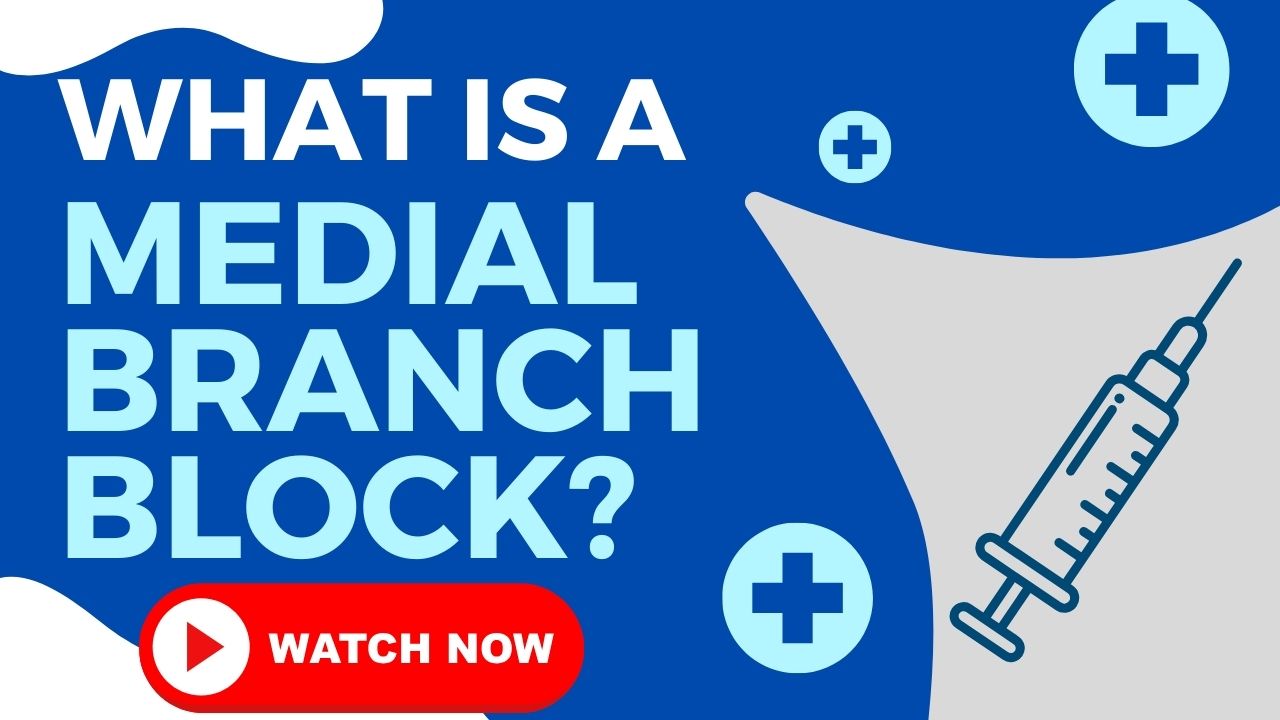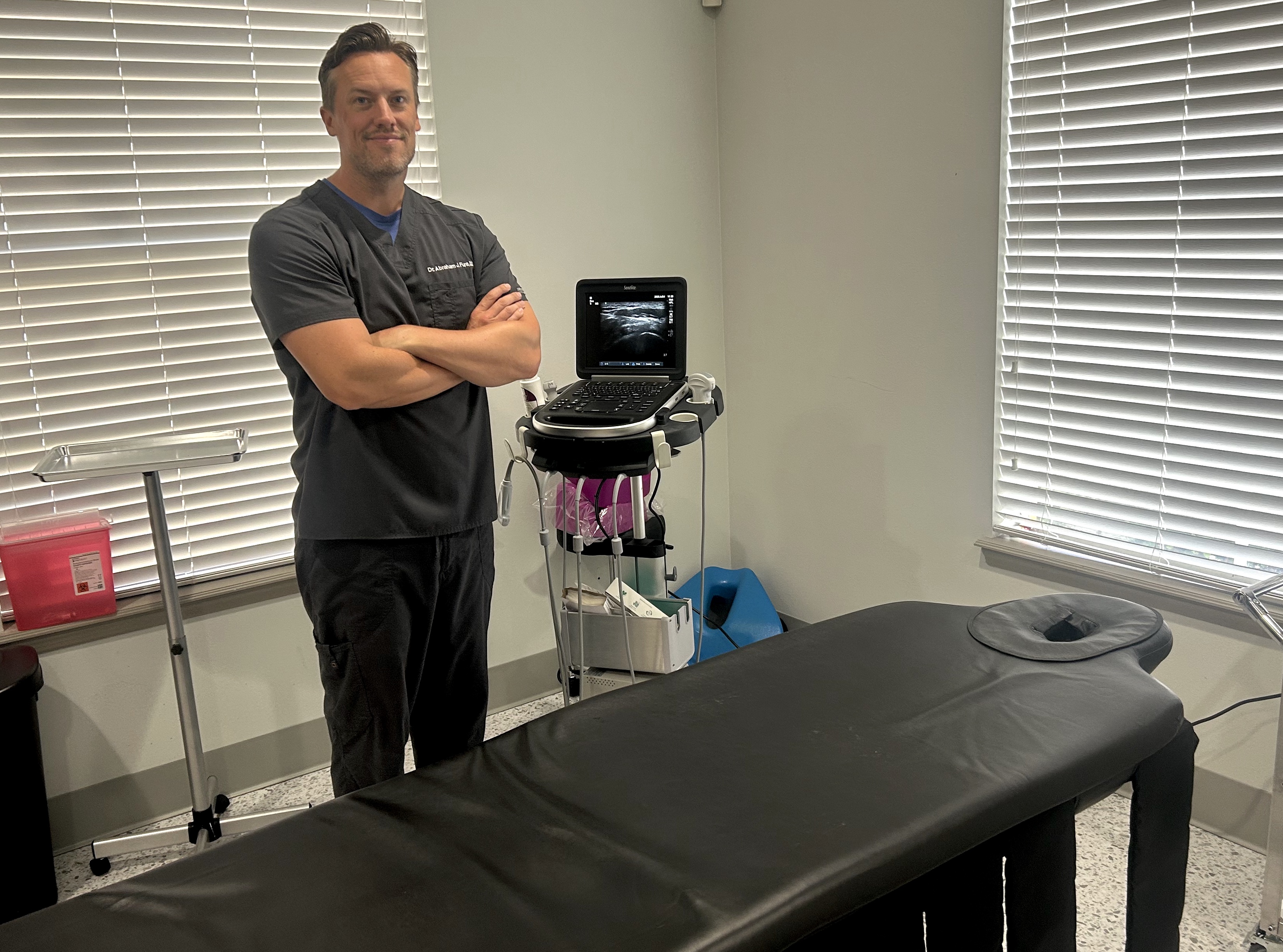
TREATMENT OVERVIEW
A Medial Branch Block is a minimally invasive procedure primarily used to diagnose the source of back or neck pain. By injecting an anesthetic near the medial branch nerves, which carry pain signals from the facet joints, we can determine if these joints are the cause of your discomfort. If you experience significant pain relief, it confirms the diagnosis and helps guide further, longer-lasting treatment options.


PROCEDURE DETAILS
A Medial Branch Block is performed in our comfortable, sterile procedure suite. You will lie on your stomach to provide the best access to your spine. The area of your skin over the target facet joints will be thoroughly cleaned, and a local anesthetic will be applied to numb the skin, minimizing discomfort during the injection.
Using live X-ray guidance (fluoroscopy), Dr. Fura will precisely guide a thin needle to the medial branch nerves. A small amount of contrast dye is often injected first to confirm the correct placement of the needle and ensure the medication will reach the intended nerves.
Once the position is confirmed, a small volume of anesthetic medication is carefully injected around each targeted medial branch nerve. The entire process is typically completed within 30 minutes. The primary goal is to see if numbing these specific nerves provides you with significant pain relief, thereby confirming the facet joints as the source of your pain.
TREATMENT ADVANTAGES
A Medial Branch Block offers several key advantages, primarily as a highly effective diagnostic tool that directs future treatment for chronic spine-related pain.
The primary benefit is its ability to precisely identify whether the facet joints are the source of your pain. This information is crucial for creating an effective long-term treatment plan.
If the block is successful, it indicates you may be an excellent candidate for a longer-lasting procedure like Radiofrequency Ablation (RFA).
While primarily diagnostic, the anesthetic provides a temporary period of pain relief, which can improve your ability to function.
The procedure is performed on an outpatient basis and typically takes less than 30 minutes, allowing you to return home the same day.
Even temporary relief can make it easier to engage in physical therapy and daily activities, helping to break the cycle of pain and inactivity.
By accurately diagnosing the pain source, it helps avoid more invasive surgical procedures that may not have been effective.
IMPORTANT INFORMATION
Medial Branch Blocks are generally very safe. However, as with any medical procedure that involves an injection, there are potential risks and side effects, which are typically minor and temporary.
Important: Dr. Fura and our team take every precaution to minimize these risks. We will discuss all potential complications with you before the procedure to ensure you can make an informed decision about your care.
PREPARATION GUIDE
Proper preparation is key to a successful and smooth procedure. Please review the following important steps to ensure you are ready for your appointment.
Ensure you have a thorough review with Dr. Fura. Disclose all allergies, especially to medications like contrast dye.
Stop blood thinners and other specific medications as instructed by Dr. Fura before your procedure.
Do not eat or drink after midnight. You must arrange for a responsible adult to drive you home afterward.
Wear comfortable, loose clothing. Avoid jewelry and leave valuables at home for safekeeping.
RECOVERY GUIDE
Your care after the procedure is straightforward but very important for evaluating its success. The main goal is to monitor your pain levels to determine the diagnostic outcome.
Rest and avoid strenuous activities. You may apply ice to the injection site if it's sore. Carefully track your pain levels in a pain diary, noting the degree of relief you experience while performing activities that normally cause pain.
You can gradually resume your normal activities. The local anesthetic will wear off, and your usual pain may return. This is expected. The critical information is the level of relief you had in the first several hours after the injection.
Continue to monitor your symptoms. Your injection site soreness should resolve. If a steroid was included in the injection, you might start to feel a more prolonged, secondary phase of pain relief during this time.
Your follow-up appointment is crucial. You will discuss the results from your pain diary with Dr. Fura, who will then determine if you are a candidate for further treatment, such as radiofrequency ablation.
Please don't hesitate to reach out and request an appointment. We look forward to meeting with you, addressing your concerns, and working together to enhance your quality of life.